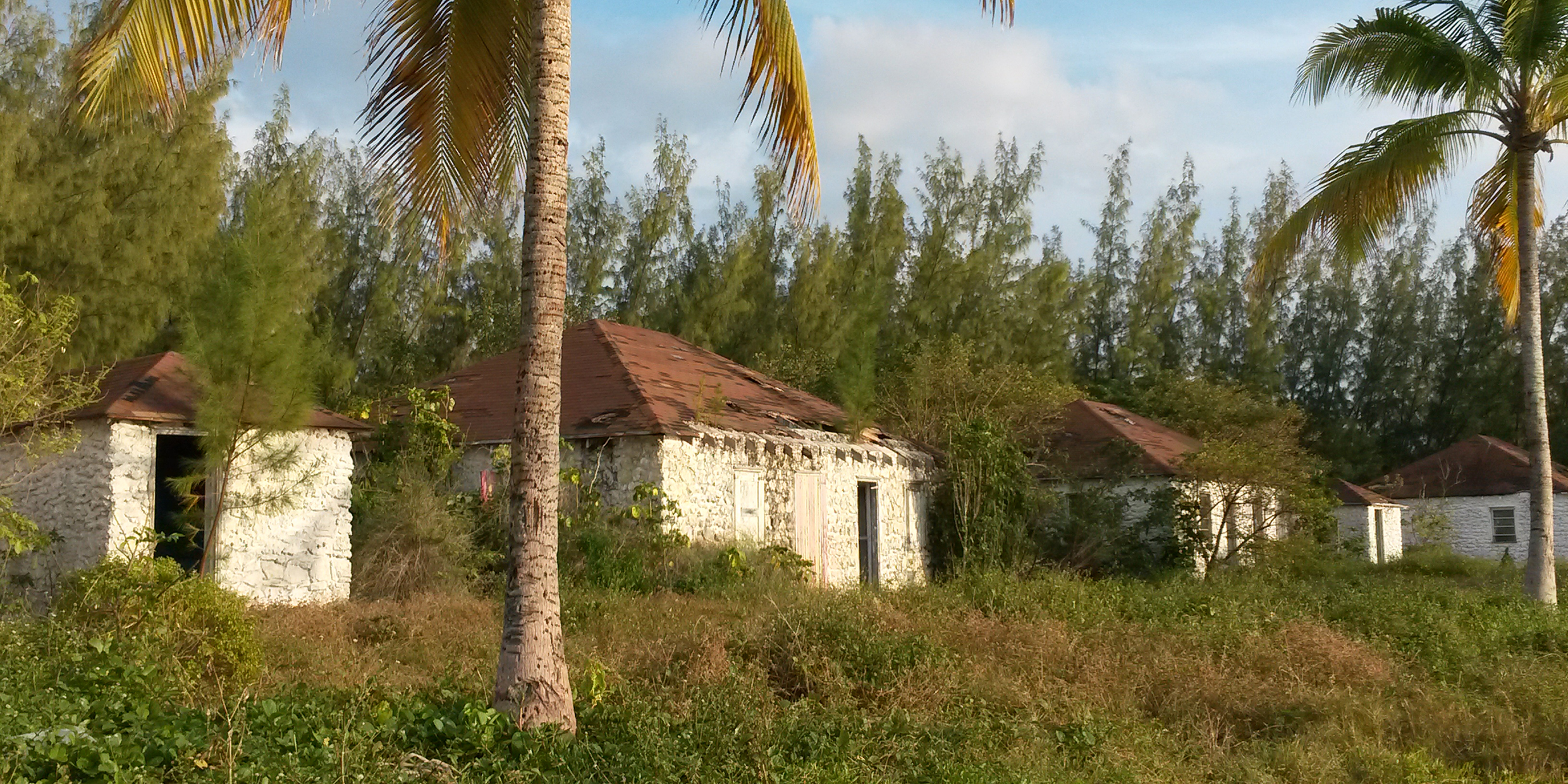Originally published 19 April 1999
EXUMA, Bahamas — The abandoned village of Richmond Hill lies at the end of a forest track here, four miles from the nearest paved road on the swampy back side of the island, away from the white sand beaches and breezy ridges of Exuma Sound. It consists of about a dozen tiny traditional houses, a school, a church, and a cemetery.
Richmond Hill was once considered the garden spot of the island, with many fruit trees — oranges, grapefruits, guavas, and limes. But it was also a desperately poor community, far off the beaten path of the new prosperity that came with the growth of tourism. Twenty years ago the last resident walked out of the forest to the Queen’s Highway and left the village to be reclaimed by nature.
Today you can walk within a dozen yards of the village and not know it is there, so thick is the vegetation that has grown up about it. But push aside the tangle of tropical foliage — bougainvillea, yellow elder, love vine, and fruit trees gone wild — and you can make your way from house to house, now mostly roofless, with crumbling plaster walls and window shutters hanging askew from rusty hinges.
Trekking here recently, my curiosity was piqued by stories told by the island’s older inhabitants. It was a Sleeping Beauty sort of experience: The houses contained every sign of human habitation — pieces of furniture, kitchen implements, and bits of decoration — but trees grew up through floorboards, vines snaked through door jams, hummingbirds darted through open windows.
The most cheerfully intact building in the village is the Church of God of Prophecy, perhaps because the preacher — a Reverend Curtis, according to my informants — was the last to leave, several years after the departure of his dwindled congregation.
The exterior walls of the church are pale blue, with darker blue doors and window shutters. The interior walls are pink. A tattered blue cotton cloth drapes the lectern. A prayerbook lies open on the lectern, reduced almost to dust by silverfish. Sunlight streams through missing shingles in the roof.
I sat on a back bench and watched and listened. Geckoes skittered on roof beams. A free-toed frog clung to the wall behind my head. Wasp nests hung from the rafters. On floors and walls were the earthen corridors of termites, pencil-thin tunnels connecting huge termite nests outside the building to the wood on which the insects feed.
The village of Richmond Hill and its lovely church are being recycled into their constituent elements. Even the words of the prayerbook open on the lectern are being consumed, made part of the gospel of life itself — the endless shuffling and reshuffling of atoms that wastes some creatures and environments and brings new creatures and environments into being.
Behind the apparent decay and new growth the atoms endure, those mysterious and eternal particles that contain within themselves tendencies to combine and recombine in endlessly creative ways.
The story begins with an explosion from a seed of infinite energy. The seed expands and cools. Elementary particles form — matter from pure energy — then the particles unite to make atoms of hydrogen and helium. Stars and galaxies coalesce from swirling gas. Stars burn and explode, forging heavy elements — carbon, nitrogen, oxygen — and hurl them into space. New stars are born, with planets made of heavy elements. On one planet near a typical star in a typical galaxy (and perhaps on a thousand other planets in other galaxies) life appears in the form of microscopic self-replicating ensembles of atoms. These progenitor organisms evolve over billions of years, shuffling and reshuffling their atoms, resulting in ever more complex creatures. Continents move. Seas rise and fall. The atmosphere changes. The atoms of life are recycled through rock and sea and air and life again. Millions of species flourish and become extinct. Others adapt, survive, and spill out progeny.
The church, the village, the rank tropical growth, the creatures that creep and fly and crawl are composed of recycled star dust, atoms forged billions of years ago in hot, massive stars, here woven by the hand of energy and entropy into a fabric of gorgeous complexity.
Science has learned a lot about how it happened — how the atoms flow in their endless recycling — but science tells us nothing about what it means, or if it means anything at all. Meaning is an act of hope. The people of Richmond Hill built their lovely blue-and-pink church as a hopeful affirmation of meaning.
For some of us, meaning is more elusive. But there are moments when it seems palpably present, as when I sat in the abandoned church that had become, in its teeming solitude, part of a rich continuum of life.
I went there for the same reason the naturalist/scientist Rachel Carson went to the edge of the sea. She wrote: “Underlying the beauty of the spectacle there is meaning and significance. It is the elusiveness of that meaning that haunts us, that sends us again and again into the natural world where the key to the riddle is hidden.”



